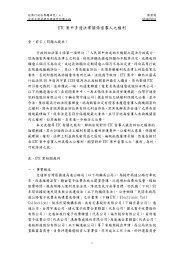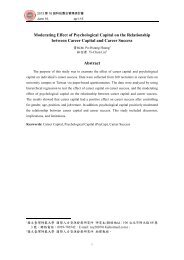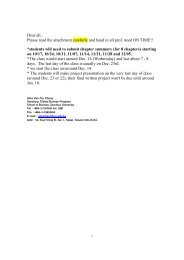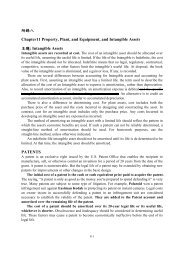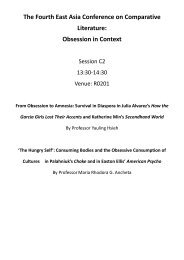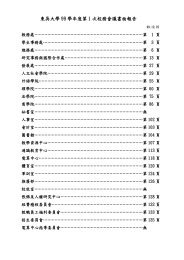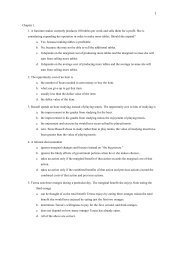The Power of the Pill: Oral Contraceptives and Women's ... - Mail
The Power of the Pill: Oral Contraceptives and Women's ... - Mail
The Power of the Pill: Oral Contraceptives and Women's ... - Mail
Create successful ePaper yourself
Turn your PDF publications into a flip-book with our unique Google optimized e-Paper software.
power <strong>of</strong> <strong>the</strong> pill 765<br />
TABLE 6<br />
Abortion <strong>and</strong> <strong>Pill</strong> Use among 18- <strong>and</strong> 19-Year-Old Women, 1971 <strong>and</strong> 1976<br />
All<br />
As <strong>of</strong> 1971:<br />
% ever had an abortion 2.2<br />
(599)<br />
% ever took <strong>the</strong> pill 17.4<br />
(595)<br />
As <strong>of</strong> 1976:<br />
% ever had an abortion 3.7<br />
(177)<br />
% ever took <strong>the</strong> pill 32.5<br />
(177)<br />
Nonvirgins<br />
All<br />
Never Married<br />
Nonvirgins<br />
A. Woman 18 <strong>and</strong> 19 Years Old Attending College in<br />
1971<br />
5.3<br />
(253)<br />
42.2<br />
(253)<br />
2.0<br />
(568)<br />
15.5<br />
(564)<br />
5.3<br />
(222)<br />
41.3<br />
(222)<br />
B. Woman 18 <strong>and</strong> 19 Years Old Attending College in<br />
1976<br />
7.2<br />
(100)<br />
61.7<br />
(100)<br />
3.0<br />
(160)<br />
29.0<br />
(160)<br />
Source.—National Survey <strong>of</strong> Young Women, 1971; National Survey <strong>of</strong> Adolescent Female Sexual Behavior.<br />
Note.—Numbers <strong>of</strong> observations are in paren<strong>the</strong>ses.<br />
6.0<br />
(87)<br />
58.3<br />
(87)<br />
men two to three years older, women born early in <strong>the</strong> baby boom (<strong>the</strong><br />
mid to late 1940s) should have faced poorer marriage market conditions<br />
than those born in <strong>the</strong> 1950s <strong>and</strong> 1960s. Yet marriage rates for college<br />
women did not increase until cohorts born from <strong>the</strong> late 1940s to early<br />
1950s <strong>and</strong> did not decrease for later ones facing more favorable sex<br />
ratios. 54<br />
<strong>The</strong> most difficult supply-side explanation to assess is <strong>the</strong> resurgence<br />
<strong>of</strong> feminism in America. Feminism empowered young women to see<br />
<strong>the</strong>mselves as <strong>the</strong> equal <strong>of</strong> <strong>the</strong>ir male peers, <strong>and</strong> it was complementary<br />
to <strong>the</strong> pill by increasing <strong>the</strong> number <strong>of</strong> young women who believed <strong>the</strong>y<br />
could aim for <strong>the</strong> top.<br />
Dem<strong>and</strong>-side explanations involving a change in <strong>the</strong> relative dem<strong>and</strong><br />
for women by employers <strong>and</strong> educational institutions can also be <strong>of</strong>fered.<br />
<strong>The</strong>y include sex discrimination legislation <strong>and</strong> <strong>the</strong> ending <strong>of</strong><br />
Vietnam-era draft deferments.<br />
Although <strong>the</strong> Civil Rights Act <strong>of</strong> 1964 covered discrimination by “sex,”<br />
<strong>the</strong> Equal Employment Opportunity Commission (EEOC) set up to<br />
investigate charges did little about sex discrimination until <strong>the</strong> early<br />
1970s. 55 Affirmative action in <strong>the</strong> form <strong>of</strong> Executive Order 11246 was<br />
amended in 1967 by Executive Order 11375 to cover women, but it took<br />
54<br />
An interaction between marriage market effects, driven by sex ratio changes, <strong>and</strong> <strong>the</strong><br />
pill may help account for this anomaly (Heer <strong>and</strong> Grossbard-Shechtman 1981).<br />
55<br />
<strong>The</strong> National Organization for Women was formed in 1966 to pressure <strong>the</strong> EEOC to<br />
consider discrimination by sex. Sex discrimination complaints rose from about 3,150 in<br />
1970 to 18,150 in 1973, peaking at 29,450 in 1976 (Goldin 1990, fig. 7.1).




